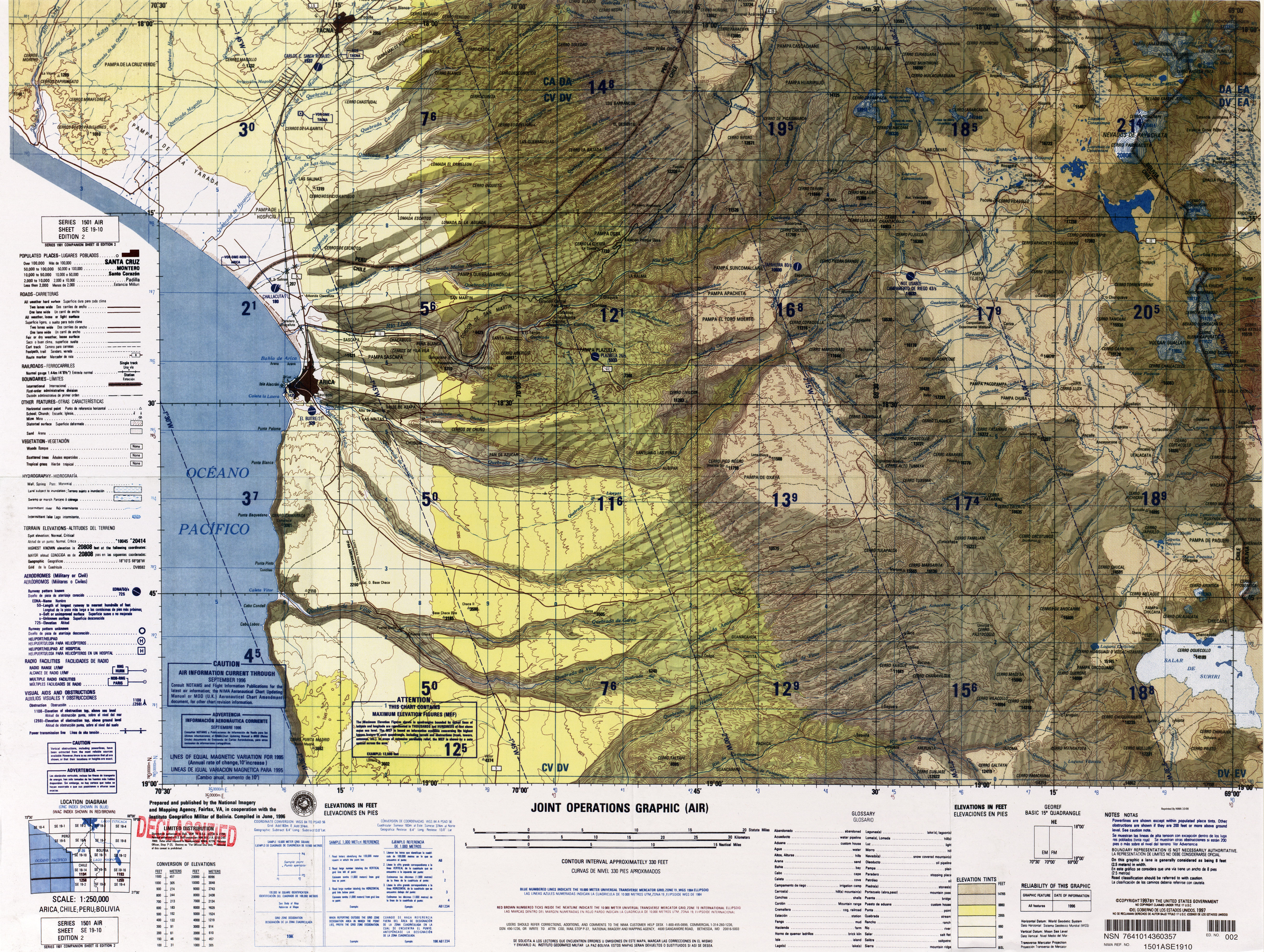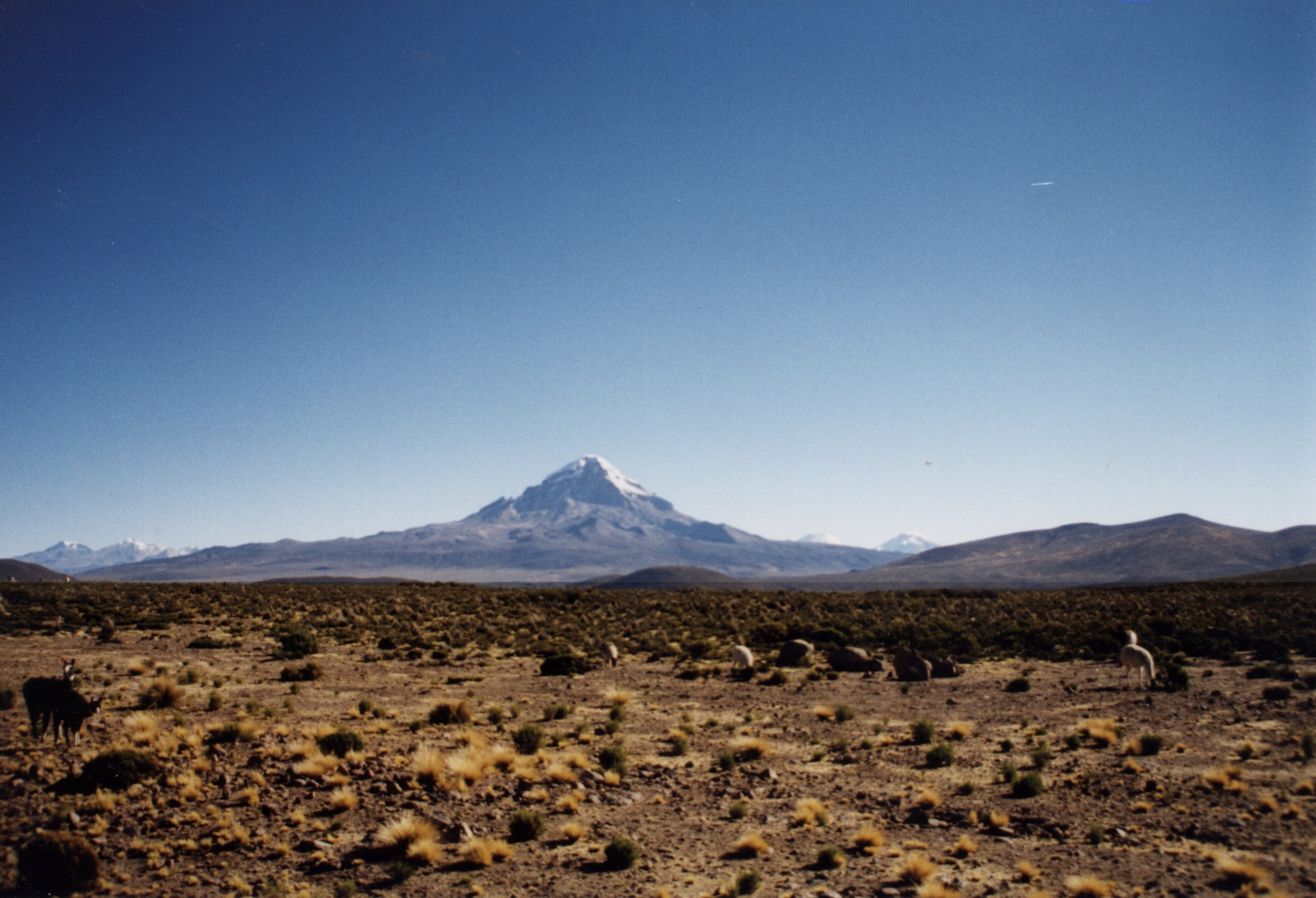|
Ari Qullu Phujru , Chachacomani Canton, south-east of the volcanic complex of Kimsa Chata. Turco Municipality:population data and map.
Ari Qullu Phujru ( Aymara ''ari'' pointed, sharp, ''qullu'' mountain, ''phujru'' hole or pit in the earth without water, not very deep, "pointed mountain hole", also spelled ''Ari Kkollu Phujro, Arikkollu Phujru'') is a mountain in the Cordillera Occidental in the Andes of Bolivia. It is situated in the Oruro Department, Sajama Province, Turco Municipality Turco Municipality is the second Municipalities of Bolivia, municipal section of the Sajama Province in the Oruro Department in Bolivia, and was founded on February 15, 1957. References [...More Info...] [...Related Items...] OR: [Wikipedia] [Google] [Baidu] |
Bolivia
, image_flag = Bandera de Bolivia (Estado).svg , flag_alt = Horizontal tricolor (red, yellow, and green from top to bottom) with the coat of arms of Bolivia in the center , flag_alt2 = 7 × 7 square patchwork with the (top left to bottom right) diagonals forming colored stripes (green, blue, purple, red, orange, yellow, white, green, blue, purple, red, orange, yellow, from top right to bottom left) , other_symbol = , other_symbol_type = Dual flag: , image_coat = Escudo de Bolivia.svg , national_anthem = " National Anthem of Bolivia" , image_map = BOL orthographic.svg , map_width = 220px , alt_map = , image_map2 = , alt_map2 = , map_caption = , capital = La Paz Sucre , largest_city = , official_languages = Spanish , languages_type = Co-official languages , languages ... [...More Info...] [...Related Items...] OR: [Wikipedia] [Google] [Baidu] |
Oruro Department
Oruro (; Quechua: ''Uru Uru''; Aymara: ''Ururu'') is a department of Bolivia, with an area of . Its capital is the city of Oruro. According to the 2012 census, the Oruro department had a population of 494,178. Provinces of Oruro The department is divided into 16 provinces which are further subdivided into municipalities and cantons. Note: Eduardo Abaroa Province (#5) is both north of and south of Sebastián Pagador Province (#6). Government The chief executive officer of Bolivian departments (since May 2010) is the governor; until then, the office was called the prefect, and until 2006 the prefect was appointed by the president of Bolivia. The current governor, Santos Tito of the Movement for Socialism – Political Instrument for the Sovereignty of the Peoples, was elected on 4 April 2010. The chief legislative body of the department is the Departmental Legislative Assembly, a body also first elected on 4 April 2010. It consists of 33 members: 16 elected by each of t ... [...More Info...] [...Related Items...] OR: [Wikipedia] [Google] [Baidu] |
Andes
The Andes, Andes Mountains or Andean Mountains (; ) are the longest continental mountain range in the world, forming a continuous highland along the western edge of South America. The range is long, wide (widest between 18°S – 20°S latitude), and has an average height of about . The Andes extend from north to south through seven South American countries: Venezuela, Colombia, Ecuador, Peru, Bolivia, Chile, and Argentina. Along their length, the Andes are split into several ranges, separated by intermediate depressions. The Andes are the location of several high plateaus—some of which host major cities such as Quito, Bogotá, Cali, Arequipa, Medellín, Bucaramanga, Sucre, Mérida, El Alto and La Paz. The Altiplano plateau is the world's second-highest after the Tibetan plateau. These ranges are in turn grouped into three major divisions based on climate: the Tropical Andes, the Dry Andes, and the Wet Andes. The Andes Mountains are the highest m ... [...More Info...] [...Related Items...] OR: [Wikipedia] [Google] [Baidu] |
Cordillera Occidental (Bolivia)
Topographic map of Bolivia showing (east to west) plains of Sub-Andean Zone in red, Eastern_Cordillera_in_white,_Altiplano.html" ;"title="Cordillera Oriental (Bolivia)">Eastern Cordillera in white, Altiplano">Cordillera Oriental (Bolivia)">Eastern Cordillera in white, Altiplano in gray, and Western Cordillera in white The Cordillera Occidental or Western Cordillera of Bolivia is part of the Andes (that is also part of the American Cordillera), a mountain range characterized by volcanic activity, making up the natural border with Chile and starting in the north with Juqhuri and ending in the south at the Licancabur volcano, which is on the southern limit of Bolivia with Chile. The border goes through the innominated point located at two-thirds of elevation of Licancabur's northeastern slope at the southwestermost point of Bolivia at 22° 49' 41" south and 67° 52' 35" west. The climate of the region is cold and inadequate for animal and plant life. Its main feature is its ground ... [...More Info...] [...Related Items...] OR: [Wikipedia] [Google] [Baidu] |
Aymara Language
Aymara (; also ) is an Aymaran language spoken by the Aymara people of the Bolivian Andes. It is one of only a handful of Native American languages with over one million speakers.The other native American languages with more than one million speakers are Nahuatl, Quechua languages, and Guaraní. Aymara, along with Spanish and Quechua, is an official language in Bolivia and Peru. It is also spoken, to a much lesser extent, by some communities in northern Chile, where it is a recognized minority language. Some linguists have claimed that Aymara is related to its more widely spoken neighbor, Quechua. That claim, however, is disputed. Although there are indeed similarities, like the nearly identical phonologies, the majority position among linguists today is that the similarities are better explained as areal features rising from prolonged cohabitation, rather than natural genealogical changes that would stem from a common protolanguage. Aymara is an agglutinating and, to a cert ... [...More Info...] [...Related Items...] OR: [Wikipedia] [Google] [Baidu] |
Sajama Province
Sajama is a province in the northwestern parts of the Bolivian Oruro Department. Location ''Sajama'' province is one of the sixteen provinces in the Oruro Department. It is located between 17° 39' and 18° 39' South and between 67° 38' and 68° 45' West. The province borders the La Paz Department in the north-west, the Republic of Chile in the west, Sabaya Province in the south-west, Litoral Province in the south-east, Carangas Province in the east, and San Pedro de Totora Province in the north-east. The province extends over 120 km from north to south, and 135 km from east to west. Geography The highest mountain in the province is the extinct Sajama volcano in the Sajama National Park. Other mountains are listed below:Bolivian IGM map 1:50,000 Cerro Uyarani Hoja 5838-I Population The main language of the province is Aymara, spoken by 90.4%, while 88.6% of the population speak Spanish and 4.2% Quechua (1992). The population increased from 7,891 inhabitants ( ... [...More Info...] [...Related Items...] OR: [Wikipedia] [Google] [Baidu] |
Turco Municipality
Turco Municipality is the second Municipalities of Bolivia, municipal section of the Sajama Province in the Oruro Department in Bolivia, and was founded on February 15, 1957.Plan de desarollo municipal Municipio de Turco (Spanish) Its seat is Turco, situated 154 km west of Oruro, Bolivia, Oruro at an altitude of 3,860 m. The municipality covers an area of 3,973 km², not taking into account the area of Laca Laca Canton. It is bordered to the north by the Curahuara de Carangas Municipality and San Pedro de Totora Province, to the south by the Litoral Province (Bolivia), Litoral and Sabaya Province, Sabaya Provinces, to the west by Chile and to the east by the Carangas Province (Qhurqhi (Corque) and Chuqi Quta (Choquecota) Municipalities). Geography T ...[...More Info...] [...Related Items...] OR: [Wikipedia] [Google] [Baidu] |
Kimsa Chata (Bolivia-Chile)
Kimsa Chata or Kimsachata (Aymara and Quechua ''kimsa'' three, Pukina ''chata'' mountain,Teofilo Laime Ajacopa, Lengua Pukina en Jesús de Machaca, referring to Alfredo Torero ("Reflexión acerca del pukina escrito por Alfredo Torero ... Pukina '''' - Castellano ''Cerro'' - Palabras relacionadas en aymara ''Qullu''") (English: mountain). ... Existencia de palabras pukinas en Jesús de Machaca: Qullunaka (cerros): ''Kimsa Chata'' "three mountains", Hispanicized ''Quimsa Chata, Quimsachata'') is an -long volcanic complex on a north–south alignment along the border between Bolivia and Chile, overseeing Chungara Lake. It contains three peaks, all stratovolcanoes. The group is formed - from north to south - by Umurata (), Acotango () and Capurata () (also known as Cerro Elena Capurata). The active volcano Guallatiri (Wallatiri) west of Capurata is not part of the group. See also * List of volcanoes in Bolivia * List of volcanoes in Chile The Smithsonian Institution's Glob ... [...More Info...] [...Related Items...] OR: [Wikipedia] [Google] [Baidu] |


.jpg)
